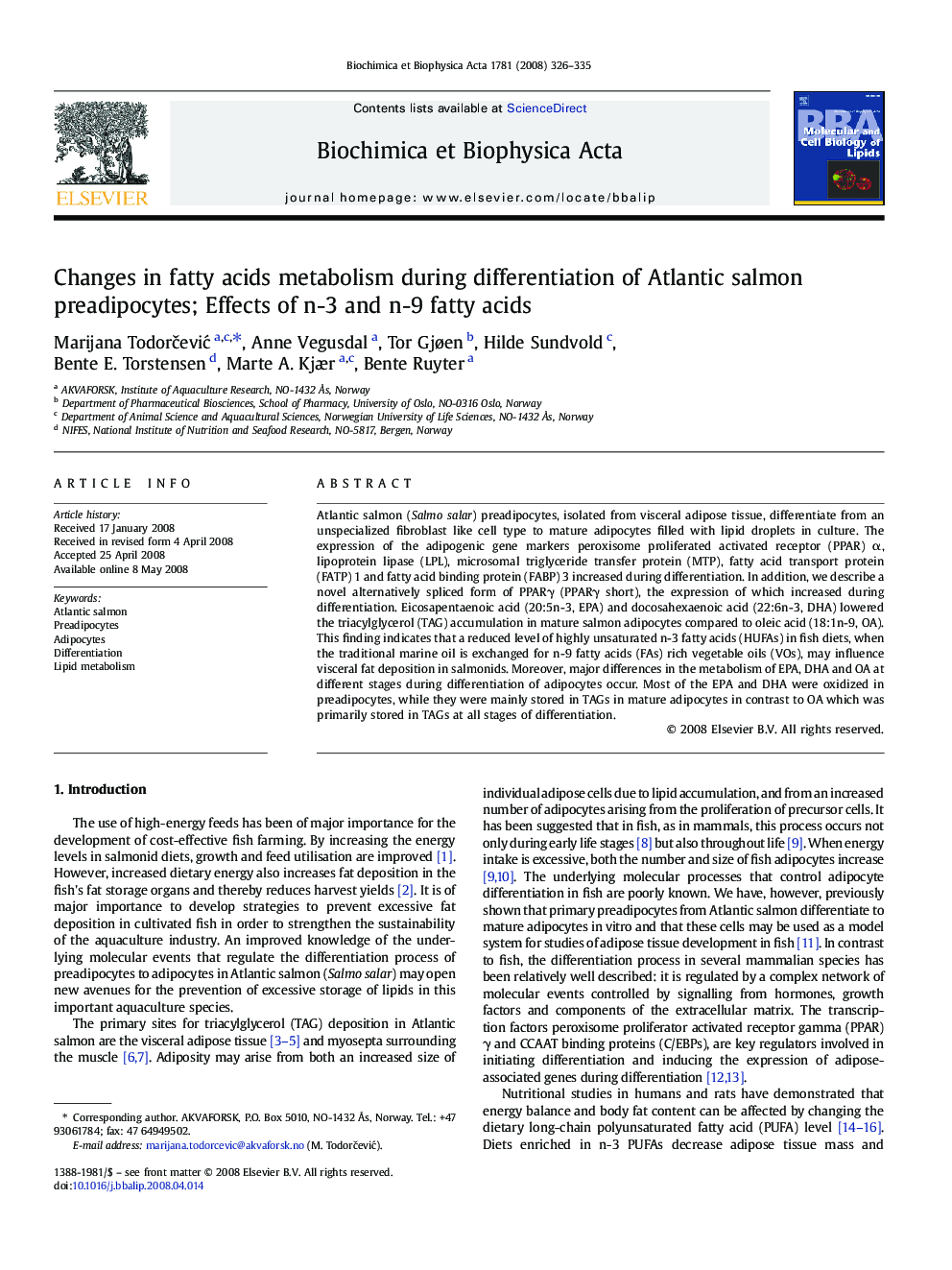| Article ID | Journal | Published Year | Pages | File Type |
|---|---|---|---|---|
| 1949995 | Biochimica et Biophysica Acta (BBA) - Molecular and Cell Biology of Lipids | 2008 | 10 Pages |
Atlantic salmon (Salmo salar) preadipocytes, isolated from visceral adipose tissue, differentiate from an unspecialized fibroblast like cell type to mature adipocytes filled with lipid droplets in culture. The expression of the adipogenic gene markers peroxisome proliferated activated receptor (PPAR) α, lipoprotein lipase (LPL), microsomal triglyceride transfer protein (MTP), fatty acid transport protein (FATP) 1 and fatty acid binding protein (FABP) 3 increased during differentiation. In addition, we describe a novel alternatively spliced form of PPARγ (PPARγ short), the expression of which increased during differentiation. Eicosapentaenoic acid (20:5n-3, EPA) and docosahexaenoic acid (22:6n-3, DHA) lowered the triacylglycerol (TAG) accumulation in mature salmon adipocytes compared to oleic acid (18:1n-9, OA). This finding indicates that a reduced level of highly unsaturated n-3 fatty acids (HUFAs) in fish diets, when the traditional marine oil is exchanged for n-9 fatty acids (FAs) rich vegetable oils (VOs), may influence visceral fat deposition in salmonids. Moreover, major differences in the metabolism of EPA, DHA and OA at different stages during differentiation of adipocytes occur. Most of the EPA and DHA were oxidized in preadipocytes, while they were mainly stored in TAGs in mature adipocytes in contrast to OA which was primarily stored in TAGs at all stages of differentiation.
